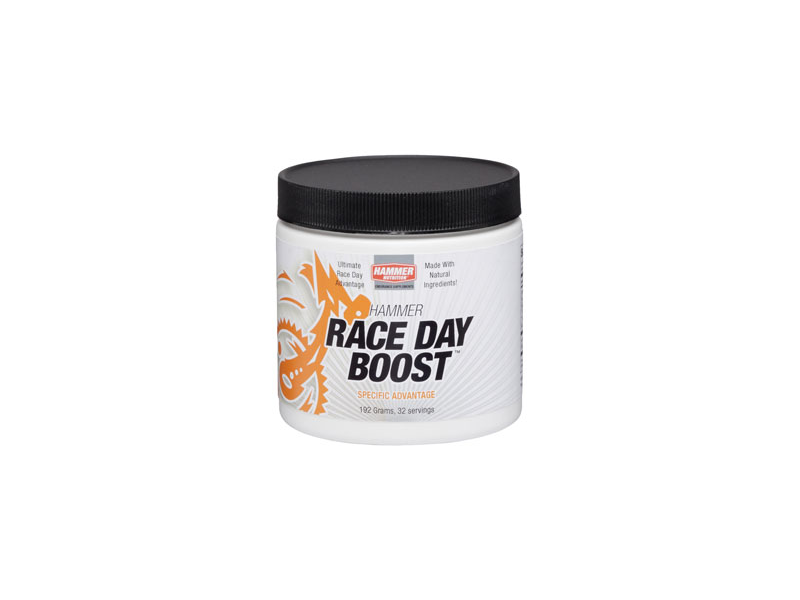Hammer Nutrition Race Day Boost Nutrition
--
/5
REVIEWS
0.0
QIKRATE
0.0
WEB
0.0

|
|
|
|
Own this? Be the first to rate it! (Tap a star to rate) |
|
|
|
|
|
|
|
DESCRIPTION
Race Day Boost contains one of the most potent legal ergogenics available for competition. In the most extensive study to date on Race Day Boost's key ingredient, fit cyclists in a 40K time trial netted a whopping 8% time improvement. Its simple formula belies its profound effectiveness, aiding in increased cellular energy production and buffering performance-robbing lactic acid. A four-day loading dose of Race Day Boost prior to a key race can make a noticeable improvement in your performance. This is a special product for special events, but if you intend to win, you better have Race Day Boost on board. Research strongly suggests that oral doses of Sodium Phosphate significantly contribute to raising extracellular phosphate levels. In doing so, Race Day Boost will enhance the functions and performance of all three of your body's sources of energy production as well as effectively buffering lactic acid during your races. Our muscles have three different energy systems, the ATP-CP system, the lactic acid system, and the oxygen system. Every muscle fiber possesses all three of these systems but only one form of energy can be utilized, ATP. The purpose of the three energy systems is to supply additional ATP, which is in limited supply in the muscle. The rate at which they can supply it varies. The first energy system is the ATP-CP (Adenosine triphosphate and creatine phosphate) system. ATP is the immediate source of energy for muscle contraction. It releases energy very rapidly but again, it is in a very limited supply. This energy system does not need oxygen to produce energy and is capable of producing energy rapidly for short periods of time. The sodium phosphate in Race Day Boost donates its molecular structure in the re-synthesis of Creatine Phosphate (CP) and Adenosine Triphosphate (ATP) and will improve the performance of this short-term energy system. The pH of the blood is around 7.3 to 7.4, which is slightly alkaline. The enzymes that produce energy via the lactic acid energy system appear to function optimally in this range. The lactic acid energy system uses carbohydrates as fuel, primarily in the form of glycogen stored in the muscles. When the body breaks down muscle glycogen (known as glycogenolysis) it leads to a process called glycolysis, in which ATP can be produced. Glycolysis occurs with or without the presence of oxygen. Because the muscles don't require as much ATP during rest, glycolysis happens at a slower rate and can be sustained by the oxygen you take in (aerobic glycolysis). As exercise begins the rate of aerobic glycolysis increases. At a certain point, as speed increases, aerobic glycolysis becomes inadequate to support energy production. Now, more ATP is produced through anaerobic glycolysis, and through a series of chemical reactions in the cells of the muscle, the formation of lactic acid allows anaerobic glycolysis to continue. However, excess lactic acid can accumulate during high intensity efforts, incr








